SaaS businesses are generally hyper-focused on bottom-line KPIs including MQLS, MRR, and CAC.
And exactly for that reason, we are too.
In order for us to prove out organic as an acquisition channel internally, tracking the right KPIs and tying those directly to our efforts is crucial for building a winning relationship.
Most SaaS SEO agencies and consultants are overly focused on true organic metrics, such as keyword position, organic traffic, and backlinks acquired.
And while these tell a story, and can have their place in the overall equation and strategy, these are not the metrics or KPIs you want to be reporting against internally – you need hard numbers to show a real measurable impact.
Let’s take a deeper dive into which SaaS SEO KPIs we track, and how we track and report against them.
Our primary goal before starting an engagement is understanding what you’re looking to get out of an SEO engagement, including:
Having this information is crucial in order for us to align your goals, with proper expectations of what we think is possible over a given period of time.
It also allows us then to run our Growth Scenario analysis to get a better idea across four different projections and scenarios of what we could expect, directly walked back against some core metrics that you already have at hand, including:
By tying our growth scenarios against your existing metrics, we now have a clear ROI calculation that we can run out to properly set expectations before even beginning a campaign – eliminating the guesswork, and giving some hard numbers and goals to march towards.
Relevant Resource: SaaS SEO ROI Calculator
SEO is generally going to then be a game, as like most marketing channels, of how quickly we march towards hitting those goals – aka, our speed and aggressiveness level at which we work to knock out the actions we need to take to get across that line in the sand.
We like to use leading indicators early on in engagements to show traction and positive movement, and the work and effort going into the campaign is pushing us in the right direction.
Tracking keyword positions as a leading indicator very early in the campaign can be an excellent way to show a positive impact.
We’re generally looking at keyword position as a leading indicator within the first 4-8 weeks of an engagement, while later even though we still track and report it, after the 8-12 week mark we shift our focus to harder bottom-line metrics.
We’re generally tracking each of our page’s primary keywords, and looking:
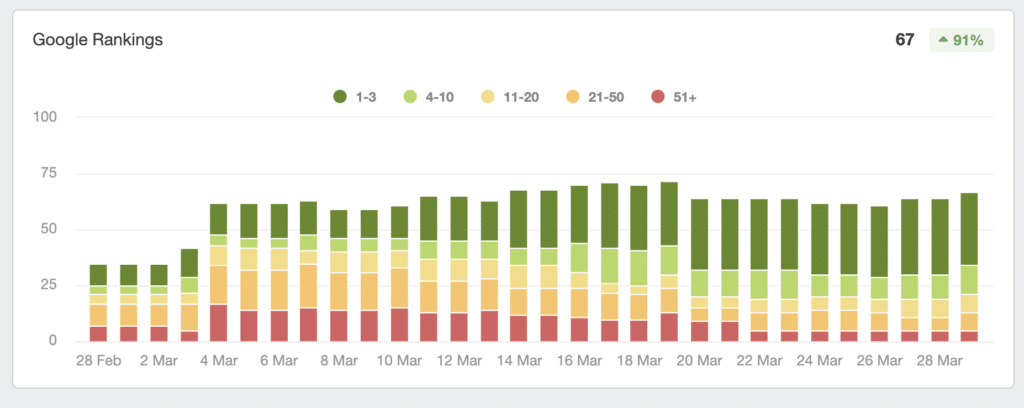
2. At the granular page level, are we solidifying top SERP positions for our pages
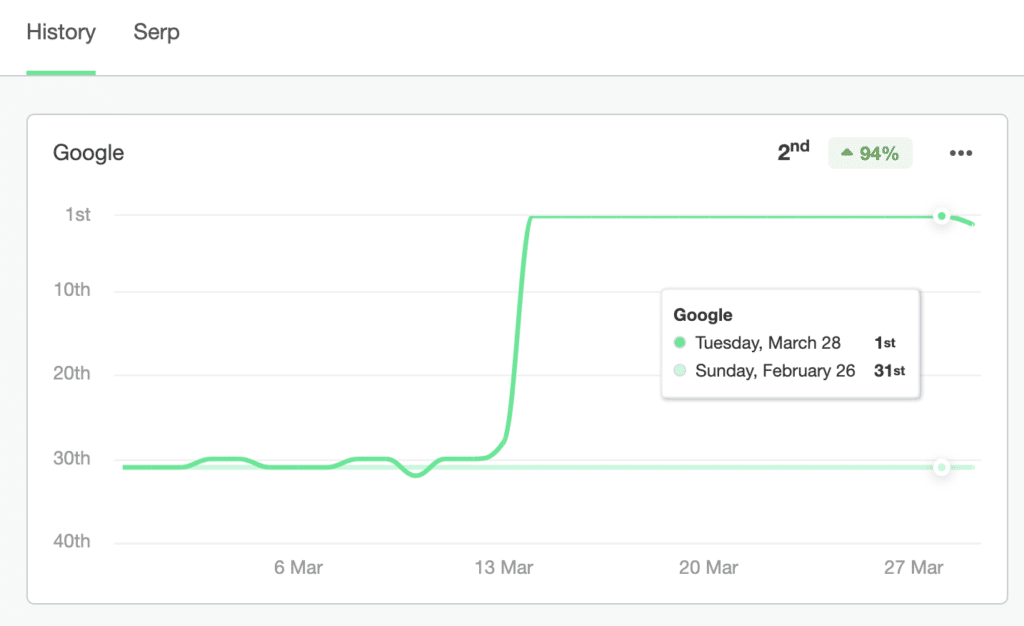
These are both strong leading indicators early on in our campaign that we’re moving forward in the right direction.
Knowing that we’re focused on building out pages and content that are mapped against mid and high-intent keywords, we’re already confident knowing that we’re owning these positions that it’s going to translate to our bottom-line numbers in the coming weeks.
Within GA4, it’s also important that we’re properly setting up conversion tracking in order to establish based on our conversion goals which of our pages are leading to our desired goals.
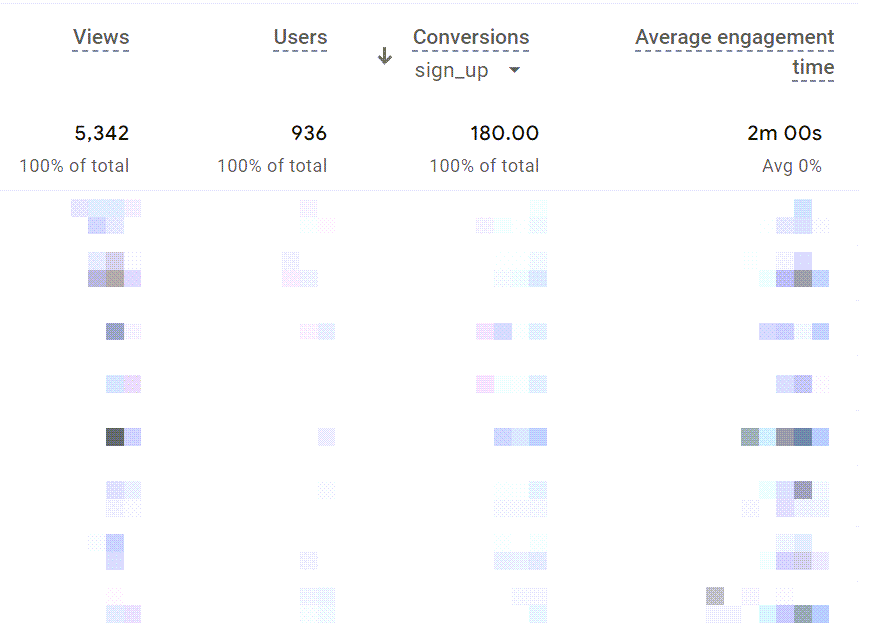
By default, this is not configured in GA4.
The same goes with properly setting up conversion tracking, assuming it’s not currently there, or firing – we need to properly configure GA4 in order to properly track conversion metrics that we can use to later push into reporting for our bottom-line KPIs.
The importance of this tracking allows us to see which of our pages are best-performing in terms of driving towards our desired goals, and to double down on what’s winning, and focus closer on page performance (position, CTR, conversion rate).
Moving away from leading indicators, we’re tracking our core KPIs from the start of the campaign – and like to move into reporting against those as soon as possible.
Not only does this allow us to show movement in metrics that actually matter, and that are tied to revenue, but it also helps to support our engagement and win more budget internally to grow and scale our campaign even faster – after smashing our initial expectations.
Tracking out demos and signups at both an aggregate, as well as at a path level is crucial to understanding which journeys are driving revenue opportunities:
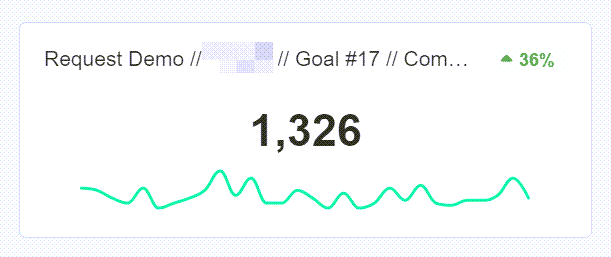
For products with a pre-defined pricing structure and the ability to self-serve, conversion tracking should be easy to setup
Tracking micro conversions is also crucial, especially for higher ACV products where we know we’re not going to drive a demo request off the first touch:

Organic is a means of attracting right-fit traffic to our website, where now they’ve shown certain signs of interest and we’re able to push them into an existing funnel or create a new funnel to continually provide value and social proof on their buying journey.
Assuming that we can track conversions for a fixed-pricing model product, tracking MRR and revenue numbers is made easy:
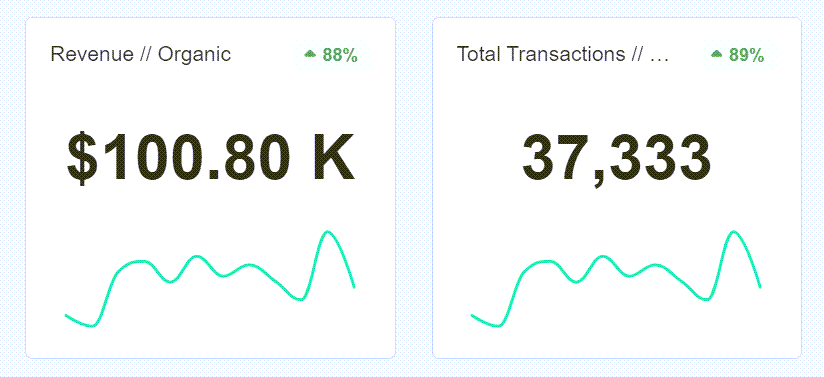
Tracking hard revenue numbers can be more complex for higher ACV products that don’t have specific pricing due to the complexity of integrations and for other reasons
But – that doesn’t mean it’s impossible.
Feeding this data back into analytics via a CRM and merging that with pre-existing data will be able to paint a clearer picture, and provide transparency on the marketing side to the actual impact of campaigns – not only organic but also paid any other potential channels as well.
And finally, now that we have hard-revenue numbers, we can tie that back against the total campaign investment for that given time period to show ROI, or that expected timeframe until we hit campaign-positive ROI:

This is a crucial number to track, for obvious reasons.
Struggling to grow organic demos signups? Rock The Rankings is a top-ranked SaaS SEO Agency that helps SaaS businesses make organic their customer acquisition engine. We’ll create a free marketing plan for your business, and walk you through step-by-step exactly what needs to be done to grow faster.
Setting proper expectations, tracking leading indicators early, and moving toward hard bottom-line numbers is something that any internal team or agency should be able to configure, monitor and report against.
Hard numbers are important in SaaS for proving our efforts and spending, and to ensure that a marketing campaign is actively pushing towards driving revenue – or not.
Naturally – due to the complexity of the B2B buyer journey and changes in the landscape – no attribution software will be perfect, but it will provide a baseline and support that efforts are moving in the right direction, or not.
If you’re not tracking these metrics and reporting against them internally, or your current vendor isn’t able to show clear ROI – it might be time to think about a better way to do things.
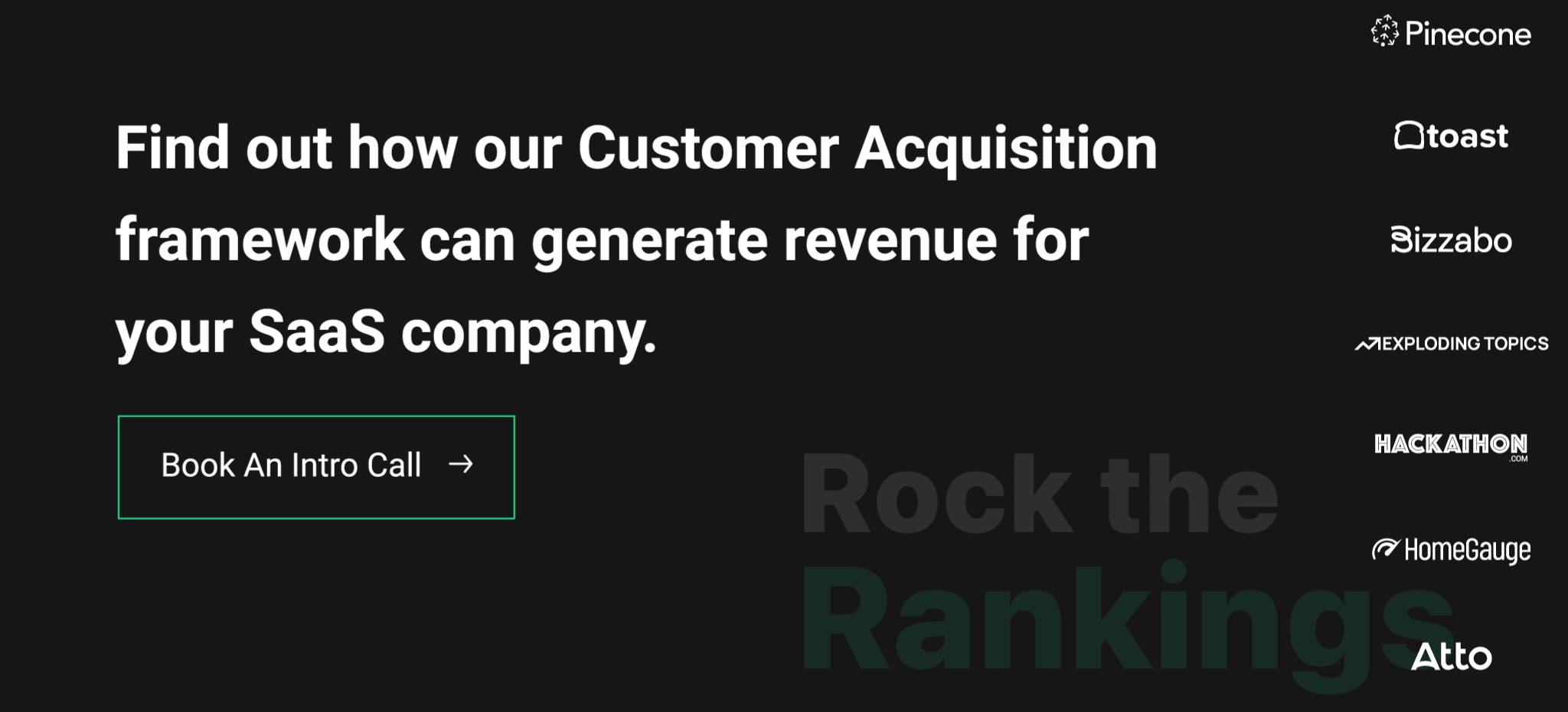
Founder of Rock The Rankings, an SEO partner that helps B2B SaaS brands crush their organic growth goals. An avid fan of tennis, and growing micro-SaaS businesses on the weekend. 2x SaaS Co-Founder – Currently working to build and scale Simple Testimonial.
Book a 1-on-1 call with our founder and walk away with a custom plan built for your business. Growth starts now.
BOOK INTRO CALL